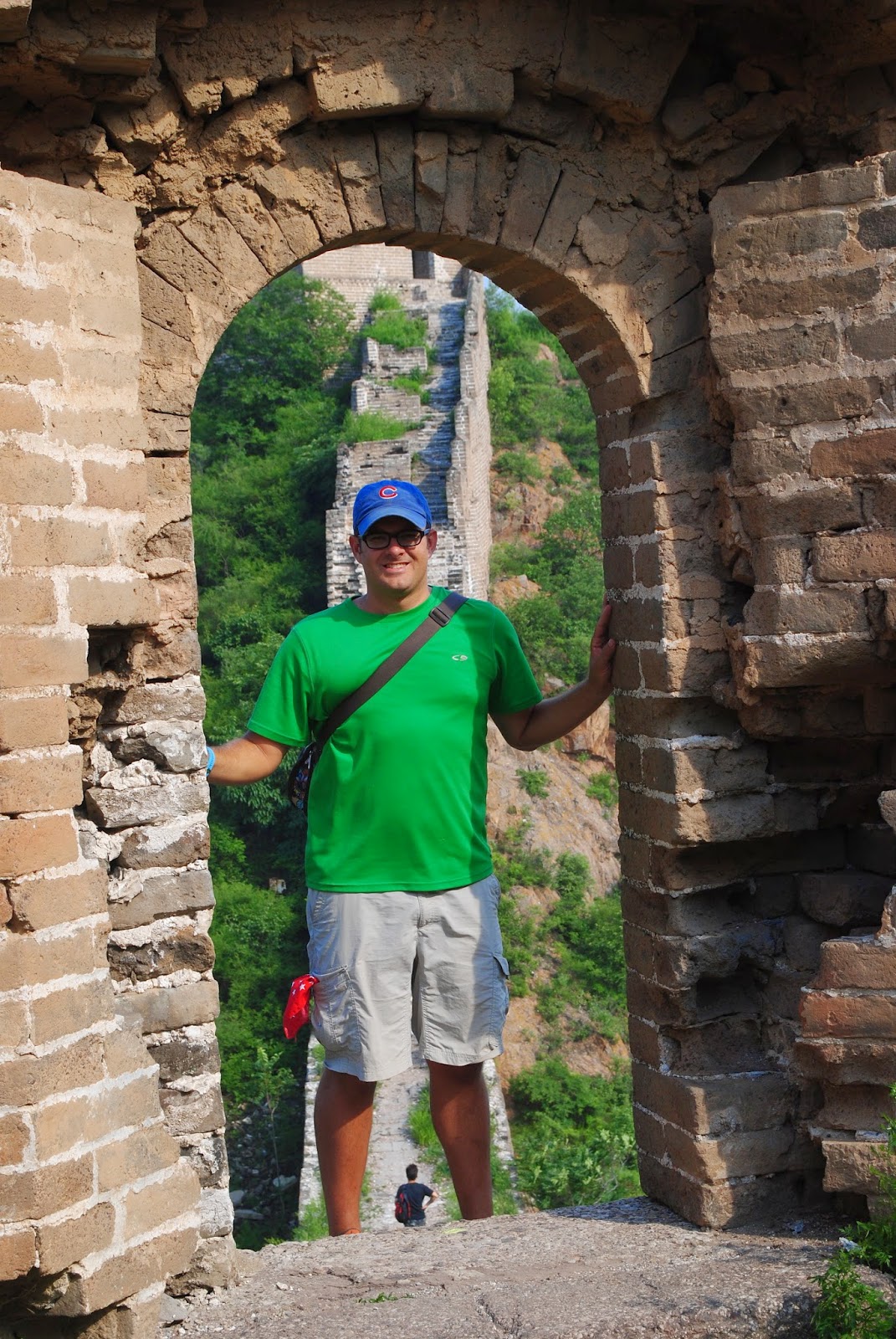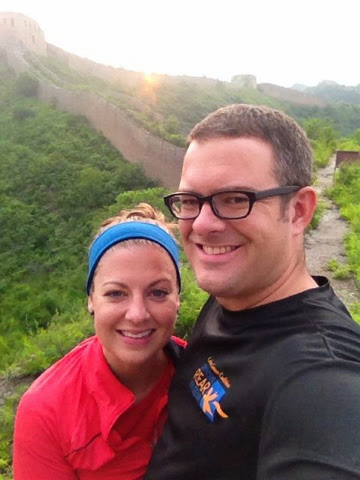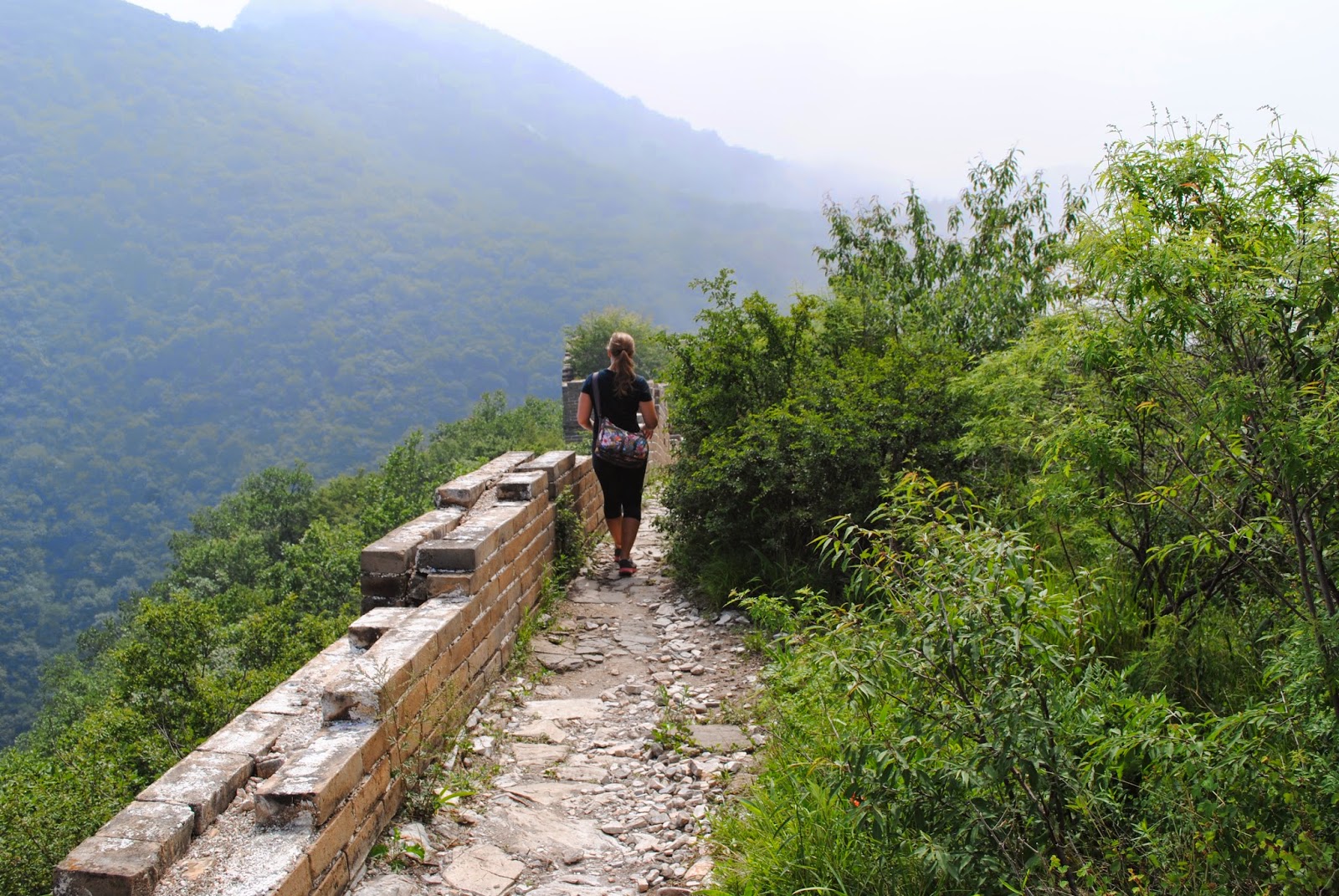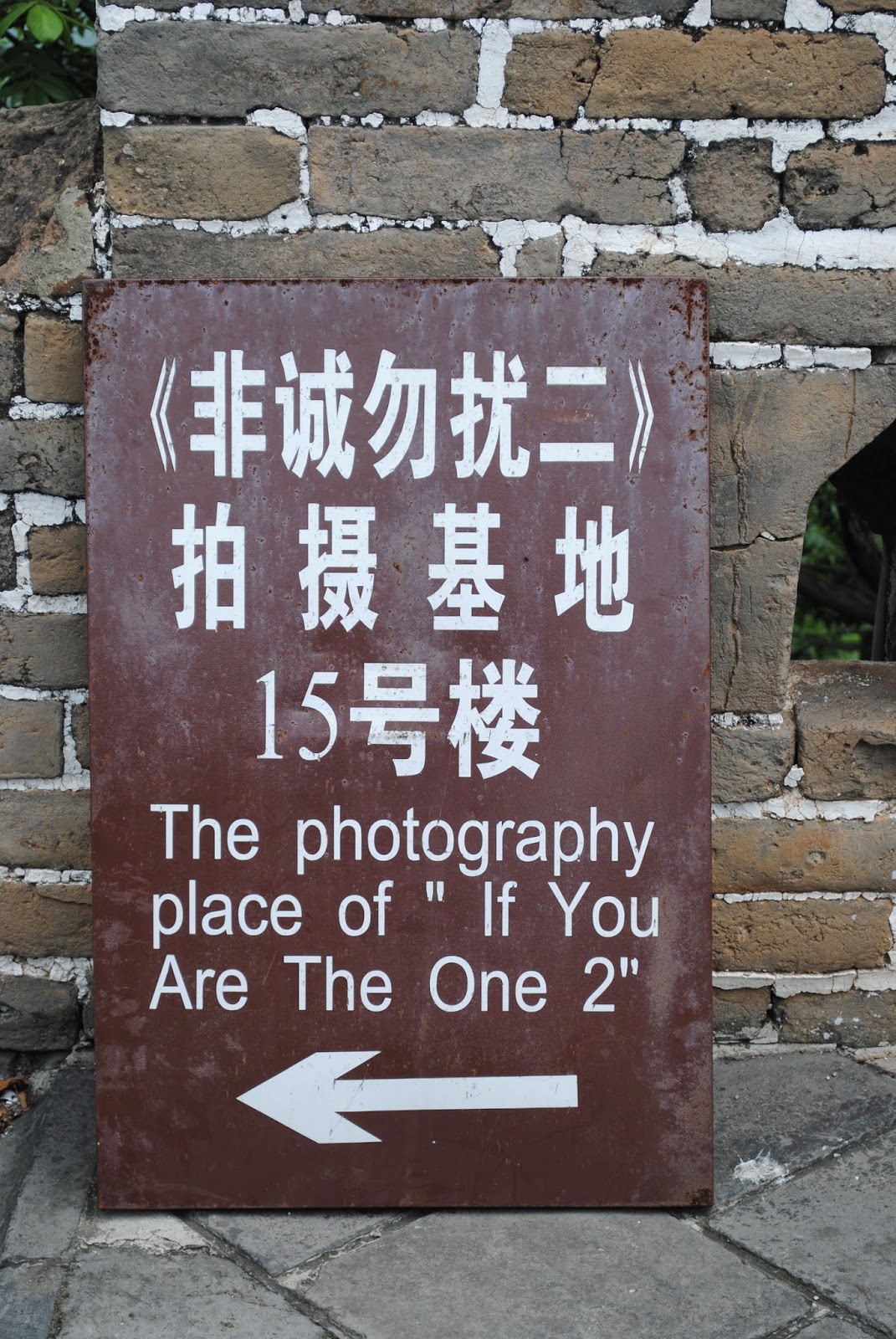The history of the wall is great and vast. Measurements of space and time for this monument to human labor depend on the context of each dynasty.
To simplify matters, our guide used the Qin dynasty, which was the first unified dynasty of China (2000 years ago), to refer to the "first wall" (which actually just connected many pre-existing walls). The wall that exists today was continuously rebuilt and fortified up to the last hundred years (and recently renovated for historical preservation).
In terms of distance, we used the Ming dynasty as the contextual reference, when the wall stretched over 6,000 km (3,700 miles).
Variety exists throughout, from low earthen barrier to high stone wall, each part made with some of the earth on which its foundation rests.
Neil and I started our journey in Gubeikou. On a weekday on this quiet segment of the wall, in four hours I saw:
-a Chinese couple
-a farmer on a stroll
-a few construction workers renovating a watch tower
-a ticket collector who was working on her embroidery
-a gentleman sitting in a watch tower and listening to an opera on a small radio
Our hike began in a mostly unrestored section, where repairs but not replacements had been made. As we continued, more of the wall came into view--it was incredible!
Then we had to climb down from the wall to walk along the wall to pass a section that was being restored. The path was narrow and steep, and it wove through high hills and ambitious corn fields.
Next we hiked back up and onto the wall at Jingshanling. This section of the wall is in the process of being restored. Taking a break after our hike up, we sat on the edge of a watch tower's large window with our legs dangling out. The wind was strong, and the feeling I got looking out was full and calm.
As my eyes followed the wall along mountain ridges, it was beautiful to notice that the wall, built with the stone of the mountain, appeared to be part of the geography rather than a manmade addition to this place.
Gazing at the distant mountains while both hiking and sitting felt like being in a art gallery, absorbing a watercolor with soft layers of more than eight mountain ridges.
We walked down Jingshanling and enjoyed a delicious dinner before setting out to camp.
We camped at Guibekou in a watch tower we had hiked through earlier in the day. A van took us to pick up our camping gear and the we hiked a different route for 45 minutes to get up to the watch tower with our bags, tents, and sleeping bags.
Reading was great, but brushing your teeth outdoors by flashlight is not advisable as moths are prone to fly into your open mouth.
The evening was so quiet that we only heard moths flying into the sides of our tent and the barking of dogs from the farms in the valleys below.
Sleeping in a watch tower on a stone floor with only a yoga mat beneath my sleeping bag resulted in as few hours of sleep as one may imagine, but sunrise on the wall made it more than worth it.
The second morning we hiked the wall on our own while our guide, Aaron "the sure and swift-footed" hiked down with our bag and the woman who had hiked up to bring us breakfast of cake and bananas. She carried the two tents, three sleeping bags, and three mats back down to her garage. Neil and I headed west on the wall, past where we started the day before.
The only creatures stirring were insects, finches, pheasants, and an older, gentlemanly ticket collector.
This part of the wall was not restored; yet it had been maintained to make it more accessible.
We met Aaron in a two story watch tower. Then we continued to the gateway, where the mountains turn into small hills, a town (and previously a gate) occupies the valley below, and the wall is shorter.
As we neared the end of the Gubeikou section, the rough path split into upper and lower branches. I took the upper since it seemed to have less brush in the path. This was a poor choice for in the absence of a root network, the dry orange clay beneath my left foot crumbled, and I found myself straddling this small part of the Great Wall. Fortunately, Neil was right below me and ready to help me down. As I planted my left foot, more of the wall gave way, so I quickly slid down to safety on the lower path.
Day two included ten kilometers of the 24+ we would hike in three days (with seven kilometers each on day one and day three).
We then drove to Jingshanling to continue east from where we had stopped yesterday. A morning snack of thick scallion crepes fueled us for the next segment.
Since this section of Jingshanling is restored, we shared the wall with a few Chinese tourists. Here a woman selling souvineers told me to slow down as I was walking too fast. In case I didn't hear the cautionary words from this concerned woman, there were signs to remind me. I had already learned that China was a country of precaution, as the first words spoken to me on the Chinese mainland were, "please stop running." I was briefly jogging to catch up with Neil as we sped to pick up our luggage after passing through immigration in the Shanghai airport.
In this part of our adventure we enjoyed new and incredible views. We also gained and lost elevation quickly as we climbed and descended barrier walls.
These barrier walls were additional fortification of the wall from within. With a watch tower at the top, Chinese soldiers could launch a counter offensive against any invaders who had successfully attacked the wall. (While hiking up and down to reach the wall nine times in three days, I was amazed that laborers were able to transport the stone and bricks needed to build the wall and that invaders were ever able to reach the wall and gain access to it.)
Not all parts of this segment have been renovated, particularly the steps. Navigating the fragmented steps felt like walking on giant, broken piano keys...I kept expecting to hear notes ring out.
Our guide saved the most challenging hike for our final morning. We hiked for an hour, gaining 300 meters of elevation through the clouds at Jinkou.
We were rewarded with awe inspiring views of the forests on the peaks 900 meters above sea level. When we finished the ascent, we could see Zheng Bei Lou (Proper North Tower). After some patient watching (and breath catching) the clouds temporarily parted to reveal five towers where we previously had only been able to see one.

Then we hiked east towards Mutianyu. Initially the wall was wild, often two thirds of the top were covered in trees and bushes and in some areas, over 80% of the width of the wall was gone.
Here the mountains are higher than the areas we explored previously, and so the materials used to construct the wall (large stones) are different.
The border between Jinkou and Mutianyu was obvious, as Mutianyu has been completely restored. The mood changed with the addition of tourists (our experience for 2.5 days had been blissfully free of other tourists), yet the wall continued to impress me.
And make me giggle at nonsensical translations.
And remind me that China remains a communist nation. Large characters on the mountain side simply yet strongly stated, Loyalty to Chairman Mao. In one part, more than 450 large, steep stairs reminded us how far we had climbed in the morning.
At the end of our afternoon and our three day adventure, we had the choice of descending via cable car or toboggan (yep, a sled in a metal chute). We chose the toboggan.
24 kilometers
5 hikes up to the wall (and four hikes down)
4 sections of the wall explored
3 days
2 cm of padding while we camped in a watch tower
1 incredible journey






























































































No comments:
Post a Comment